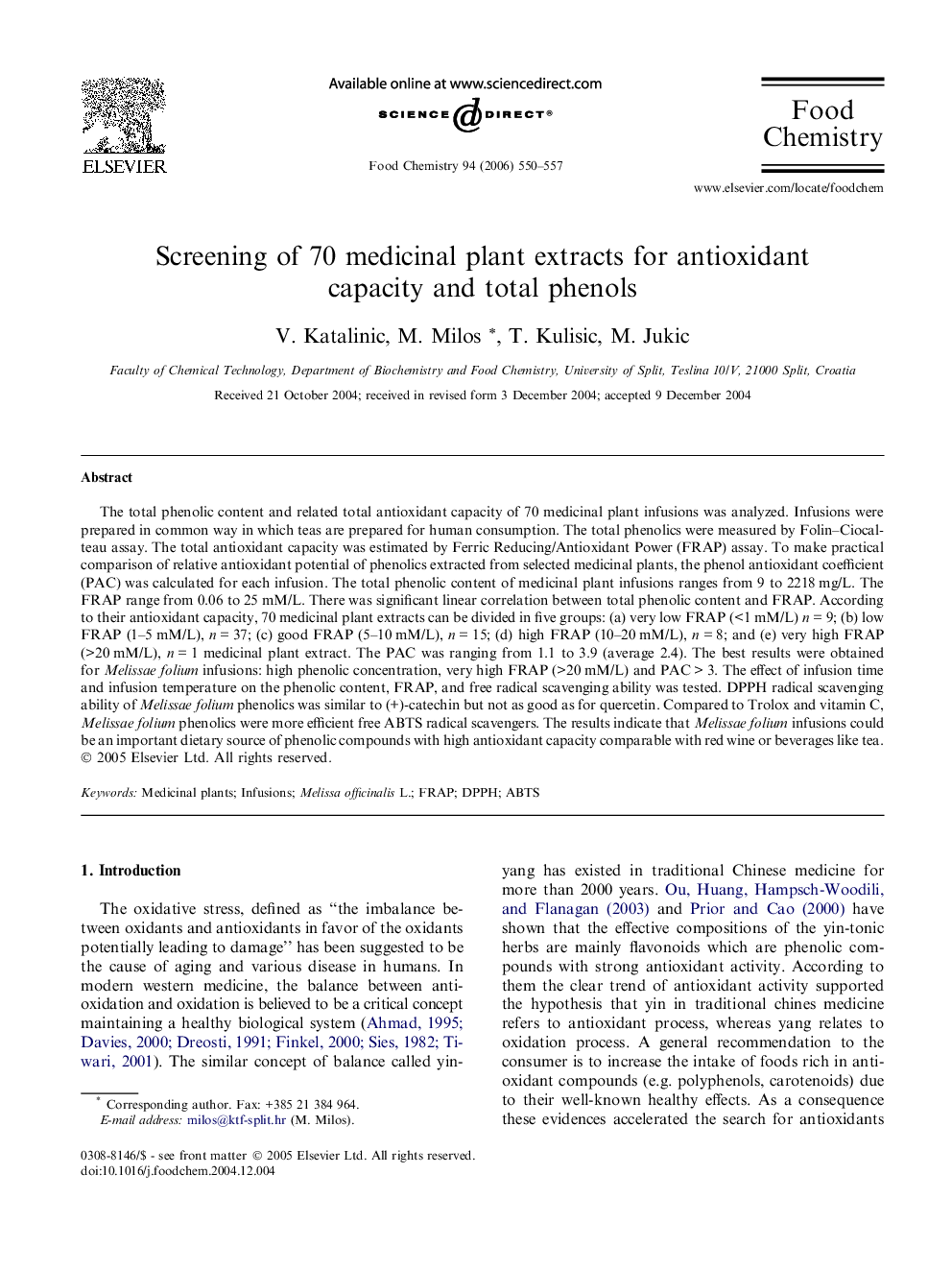| کد مقاله | کد نشریه | سال انتشار | مقاله انگلیسی | نسخه تمام متن |
|---|---|---|---|---|
| 1191784 | 963584 | 2006 | 8 صفحه PDF | دانلود رایگان |

The total phenolic content and related total antioxidant capacity of 70 medicinal plant infusions was analyzed. Infusions were prepared in common way in which teas are prepared for human consumption. The total phenolics were measured by Folin–Ciocalteau assay. The total antioxidant capacity was estimated by Ferric Reducing/Antioxidant Power (FRAP) assay. To make practical comparison of relative antioxidant potential of phenolics extracted from selected medicinal plants, the phenol antioxidant coefficient (PAC) was calculated for each infusion. The total phenolic content of medicinal plant infusions ranges from 9 to 2218 mg/L. The FRAP range from 0.06 to 25 mM/L. There was significant linear correlation between total phenolic content and FRAP. According to their antioxidant capacity, 70 medicinal plant extracts can be divided in five groups: (a) very low FRAP (<1 mM/L) n = 9; (b) low FRAP (1–5 mM/L), n = 37; (c) good FRAP (5–10 mM/L), n = 15; (d) high FRAP (10–20 mM/L), n = 8; and (e) very high FRAP (>20 mM/L), n = 1 medicinal plant extract. The PAC was ranging from 1.1 to 3.9 (average 2.4). The best results were obtained for Melissae folium infusions: high phenolic concentration, very high FRAP (>20 mM/L) and PAC > 3. The effect of infusion time and infusion temperature on the phenolic content, FRAP, and free radical scavenging ability was tested. DPPH radical scavenging ability of Melissae folium phenolics was similar to (+)-catechin but not as good as for quercetin. Compared to Trolox and vitamin C, Melissae folium phenolics were more efficient free ABTS radical scavengers. The results indicate that Melissae folium infusions could be an important dietary source of phenolic compounds with high antioxidant capacity comparable with red wine or beverages like tea.
Journal: Food Chemistry - Volume 94, Issue 4, March 2006, Pages 550–557